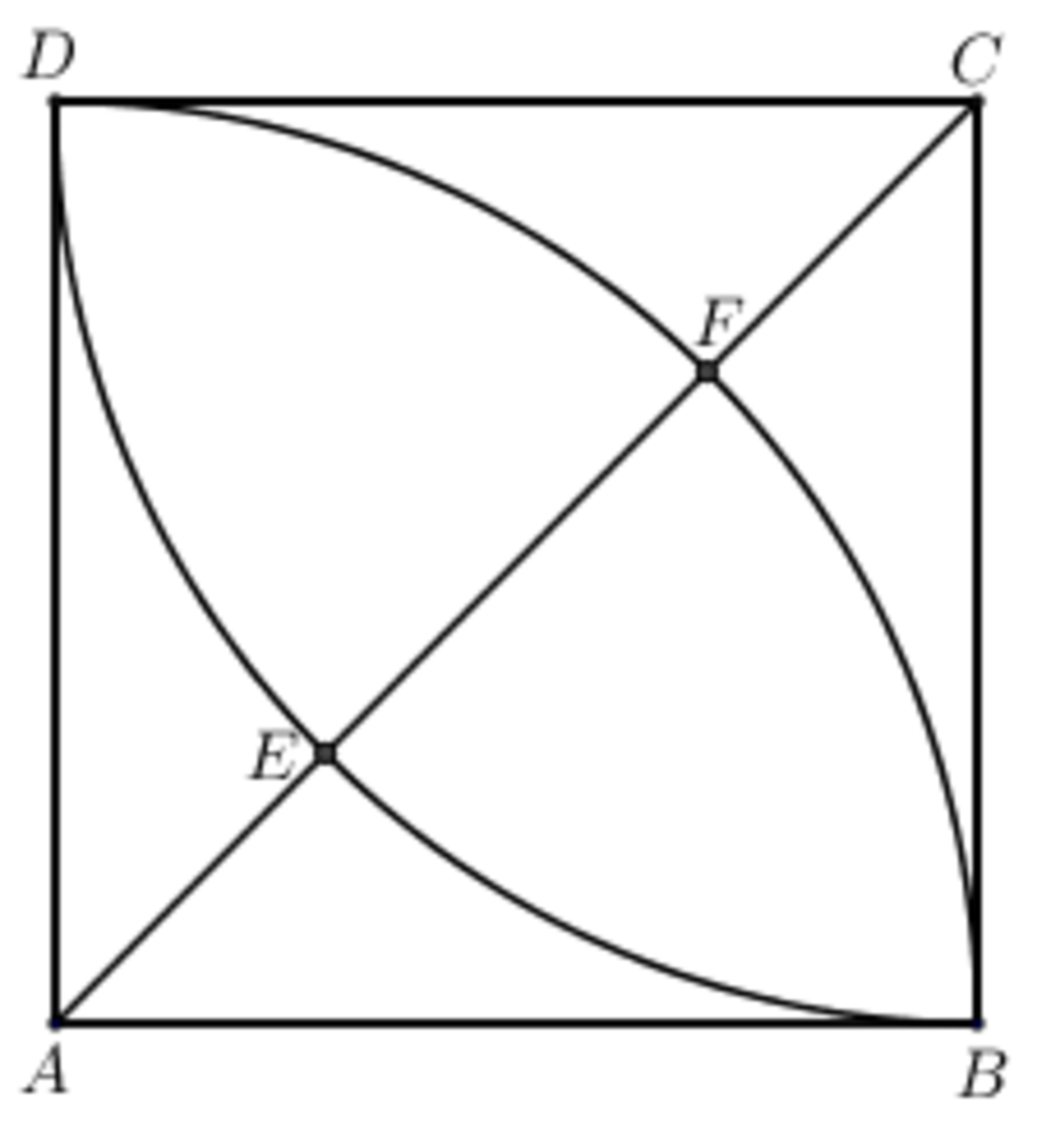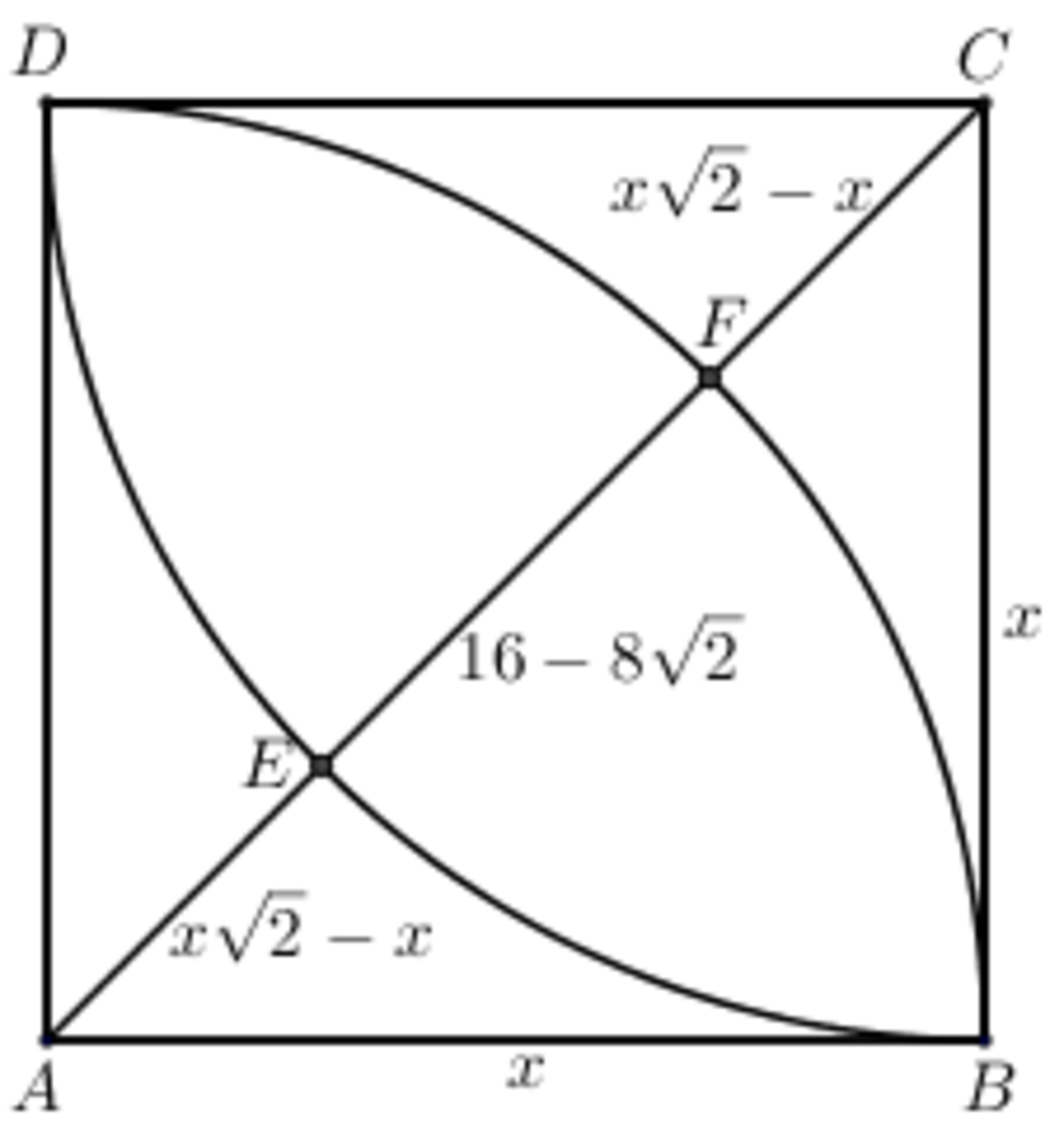A geometry problem by Wildan Bagus Wicaksono
 Inside the square
A
B
C
D
is a circular arc centered at
A
and in
C
as shown above. If the length of
E
F
is
8
(
2
−
2
)
, determine the area of the square
A
B
C
D
.
Inside the square
A
B
C
D
is a circular arc centered at
A
and in
C
as shown above. If the length of
E
F
is
8
(
2
−
2
)
, determine the area of the square
A
B
C
D
.
The answer is 64.
This section requires Javascript.
You are seeing this because something didn't load right. We suggest you, (a) try
refreshing the page, (b) enabling javascript if it is disabled on your browser and,
finally, (c)
loading the
non-javascript version of this page
. We're sorry about the hassle.
2 solutions
 Length of
A
E
=
F
C
=
x
2
−
x
.
Length of
A
E
=
F
C
=
x
2
−
x
.
A C = A E + E F + F C
x 2 = ( x 2 − x ) + ( 1 6 − 8 2 ) + ( x 2 − x ) 2 x − x 2 = 1 6 − 8 2 x ( 2 − 2 ) = 8 ( 2 − 2 ) x = 8
Thus, the area of the square A B C D is 6 4 .
Let x be the side length of the square.
By the pythagorean theorem , A C = 2 x
F C = A C − x = 2 x − x = x ( 2 − 1 )
Since A E = F C ,
E F = A C − 2 ( F C )
8 ( 2 − 2 ) = 2 x − 2 x ( 2 − 1 )
8 ( 2 − 2 ) = 2 x − 2 x 2 + 2 x
8 ( 2 − 2 ) = 2 x − 2 x
8 ( 2 − 2 ) = x ( 2 − 2 )
x = 8
Finally the area of the square is x 2 = 8 2 = 6 4